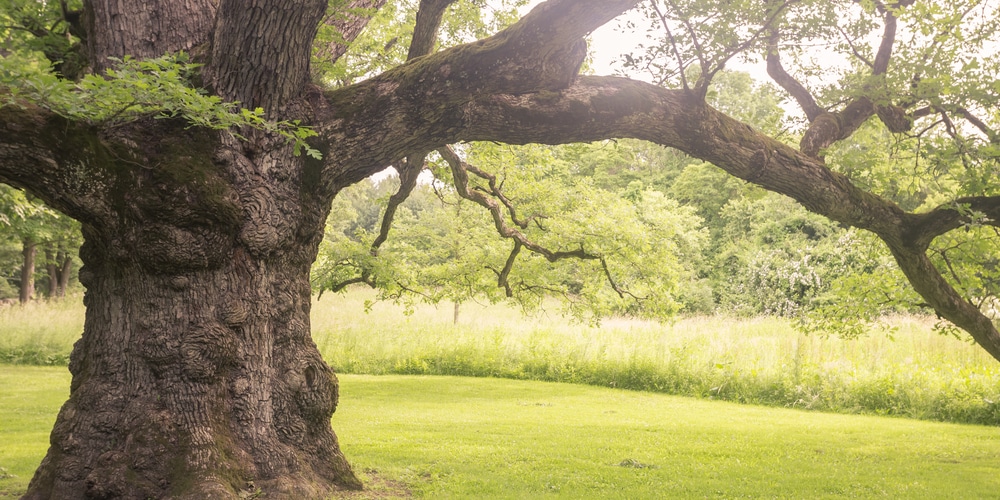Immediately after the cold winter season is over, spring follows up to give plants a lifeline and allow them to return to normal. It’s usually expected that trees should start blooming in spring.
However, this isn’t always the case regardless of the effort you put forward to ensure your trees grow leaves. Some people even go to the extent of regular maintenance practices such as regular watering, pruning, weeding, etc., to promote tree health and minimize nutritional competition with other plants. Even with these practices, some trees will fail to grow leaves. This article will answer the question, ‘Why is your tree not growing leaves in spring?’
Why is your tree not growing leaves in spring?

Below are some of the most common reasons that a tree fails to grow leaves in the spring.
1. Your tree is a late bloomer
This is a common reason for trees not growing leaves in spring. Different tree species have varied blooming timelines. Therefore, if your tree belongs to the category of late bloomers, it’ll take time before you can start seeing leaves growing. Some common late blooming tree species include crape myrtle trees, black locust trees, and black walnut trees. Apart from the tree species, there could also be other underlying issues such as poor tree health and stress. Therefore, it’s essential to talk to an expert arborist to determine the presence of other underlying issues.
2. Temperature variations
Most trees develop leafing issues during the beginning of the winter seasons. The most common affected trees, in this case, are maple and ornamental trees. Temperature variations make it difficult for these trees to grow leaves in spring. Cold temperatures are the number one reason why mango trees lose their leaves.
Typically, during the winter season, the tree leafing process is interrupted when there are some warm temperatures followed by frost. These variations prevent the budding process from taking place at the right time. Depending on the level of temperature variation, some trees might delay leafing out, whereas others will skip the year and leaf out the following year.
3. Fungal diseases
If your tree is infected by spring fungal diseases, there are minimal chances of not leaves not growing. Fungus is a very common reason for a pine tree turning brown. Spring fungal diseases make the tree weak such that making enough food to sustain all functions, including the growth of leaves, becomes a challenge. Apart from the leaves, the roots also become affected, wherein in severe cases, the tree might dry up. Anthracnose is a common spring fungal disease for trees. This disease mainly affects tree species such as maple, oak, dogwood, and sycamore trees. To prevent this tree problem, you should take immediate action after noticing leave spots caused by the fungal disease.
4. Strong winds and storms
If you live in an area with strong winds and storms, there are high chances of your trees getting damaged. Strong winds can uproot your trees and damage them severely, such that growing flowers becomes difficult until they regain their normal stability. These strong winds and storms can also cause the breakage of tree branches. When the branches break, the tree will require a lot of effort to regain the branches, which will start growing leaves. If the winds and storms displace soil around the tree, it’ll also be challenging for the tree to absorb water properly.
5. Overcrowding
Different tree species require some spacing for proper growth and development. Some tree species need full light to grow. Overcrowded trees could be the reason your trees aren’t leafing during spring. When trees are overcrowded, there’s a nutritional competition that can affect their leafing ability. Therefore, if your trees are overcrowded, you need to contact a professional arborist for possible trimming or permanent removal of a number of trees.
6. Extreme drought
Areas that experience extreme drought are prone to reducing the chances of trees growing leaves in spring. Drought has a detrimental effect on plants. First, it makes it difficult for trees to make sufficient food and ensure the leafing process is easy during spring. Typically, drought affects trees during the summer, but the results are seen in the subsequent spring season. Secondly, some tree species will fail to grow leaves during spring to keep water and prevent them from drying up. This drought challenge can be solved through regular and increased watering of the trees. However, it’s essential to check if this is legal.
Why is your tree not growing leaves in spring: Conclusion
In conclusion, these are the top reasons your tree isn’t growing leaves in spring. You should talk to tree service to determine the reason and take the necessary steps. However, it’s essential to monitor your tree health since it’s the most common thing that affects leafing.
